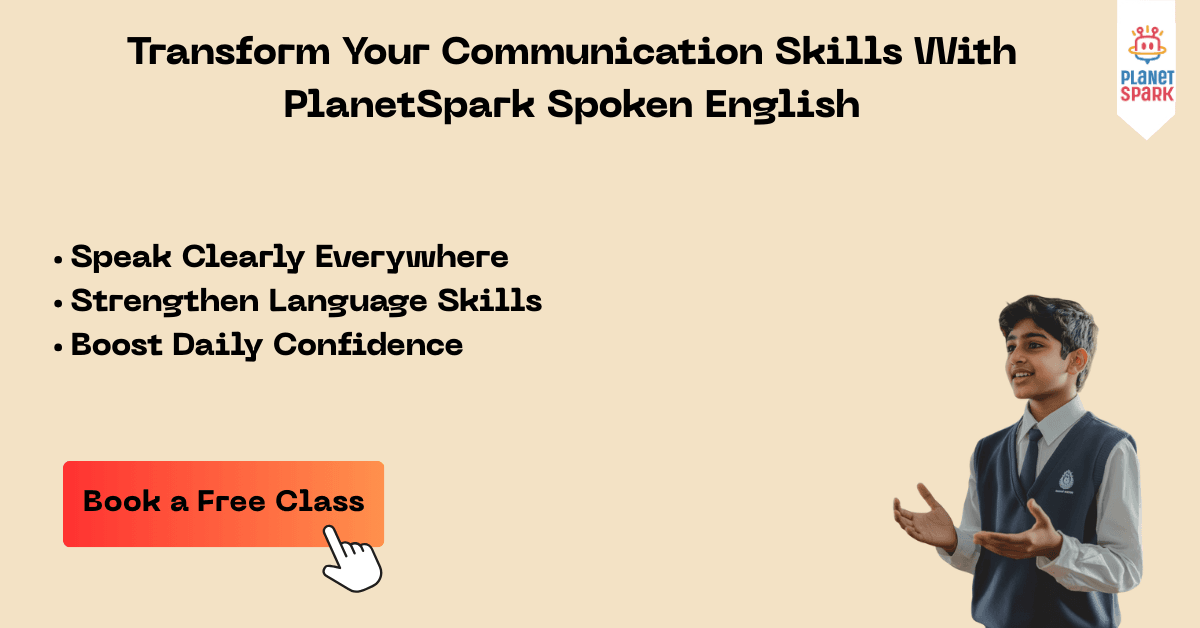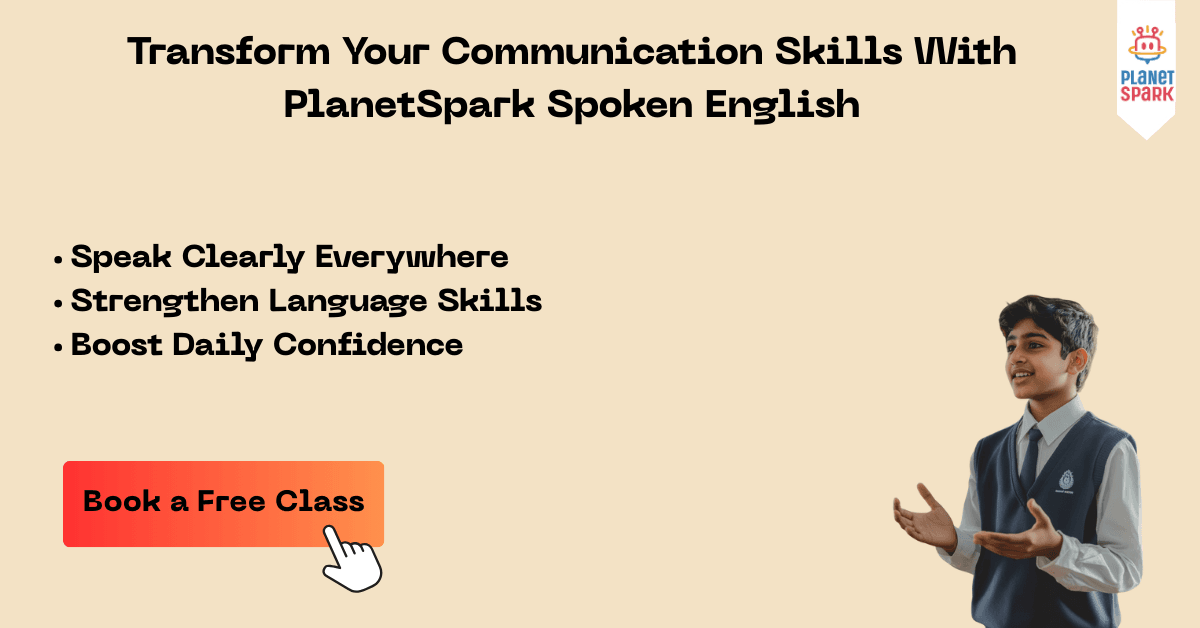Understanding and Overcoming Reading Anxiety in Kids

Table of Contents
- What is Reading Anxiety?
- Signs of Reading Anxiety in Children
- Common Causes of Reading Anxiety
- Environmental Factors Also Play a Role
- Impact on Academic and Emotional Well-being
- Strategies to Help Children Overcome Reading Anxiety
- Role of Parents and Teachers
- When to Seek Professional Help
- How PlanetSpark Helps Your Child Conquer Reading Anxiety
- Conclusion
- Frequently Asked Questions (FAQs)
Reading is a foundational skill in every child's educational journey. However, for many children, reading does not come easily. The joy of flipping through a book can often be replaced by dread, frustration, and even panic. These emotional blocks are not merely disinterest or laziness, they may be signs of a deeper issue called reading anxiety.
At PlanetSpark, we understand that building strong communication and reading skills is a gradual process that requires patience, encouragement, and the right environment. Our Spoken English Courses for kids are designed to empower young learners with confidence in speaking, reading, and comprehension. Through personalized attention, engaging content, and AI-enabled tools, we help your child overcome the fear of reading and express themselves fluently.
What is Reading Anxiety?
Reading anxiety, also known as bibliophobia, refers to the intense nervousness or fear children experience when asked to read aloud or independently. It may not always be visible, but it can significantly hinder academic growth and self-esteem.
Key signs include:
Avoiding reading tasks at school or at home
Showing frustration or tears while reading
Relying heavily on parents or teachers to read for them
Complaining of headaches or stomachaches before reading sessions
Subtypes of reading anxiety:
Performance-based: Fear of reading aloud due to embarrassment or fear of making mistakes
Comprehension-based: Worry about not understanding the content
Decoding-based: Stress arising from difficulty sounding out words or identifying letters

Signs of Reading Anxiety in Children
Reading anxiety isn’t always obvious. Many children show subtle signs before it becomes a clear pattern. Parents and educators should be vigilant about observing behavioral, emotional, and physical indicators.
Behavioral Signs:
- Expresses dislike for reading aloud or avoids reading altogether
- Throws tantrums when asked to read
- Makes excuses like “I lost my book” or “I need to use the bathroom” during reading time
- Gives up too quickly, saying, “I can’t do this.”
Emotional Signs:
- Says things like “Reading is stupid” or “I hate reading groups”
- Worries about being called on to read
- Shows low confidence in reading abilities
Physical Signs:
- Trembles while reading
- Sweaty palms or flushed face
- Restlessness or fidgeting
- Shaky voice
If your child exhibits these signs consistently, it may be time to explore reading anxiety as the root cause.
Book a free trial class with PlanetSpark today and help your child build confidence in reading and public speaking.
Common Causes of Reading Anxiety
Difficulty Sounding Out Words
When decoding words doesn’t come easily, kids feel left behind, especially when peers are more fluent. This struggle builds anxiety around reading.
Limited Vocabulary
Children with a small vocabulary find it hard to understand what they read. The constant need to pause and decipher meanings creates frustration and avoidance.
Attention Deficits
Difficulty focusing on a text can lead to poor comprehension. When children realize they haven’t understood a passage, they feel discouraged and give up.
Previous Negative Experiences
Being laughed at or corrected harshly for mispronunciations or slow reading can leave deep emotional scars. Children may associate reading with shame, leading to long-term anxiety.
Environmental Factors Also Play a Role
Environmental influences can greatly affect a child’s comfort and motivation when it comes to reading. These are often overlooked but crucial elements that can either support or hinder reading confidence.
1. Lack of Reading Resources at Home
Limited Access to Books: Many homes may not have age-appropriate books or engaging reading material, making it difficult for children to develop a reading habit.
No Digital Tools or Platforms: Without access to digital story apps or online reading programs, children miss out on modern, interactive methods that make reading enjoyable.
No Quiet Reading Space: A noisy or chaotic home environment can make it hard for kids to focus or develop an emotional connection with reading.
2. Minimal Parental Engagement in Reading Activities
No Reading Role Models: Children often imitate adults. If parents don’t read, kids may not see reading as a valuable or enjoyable activity.
Infrequent Reading Time: Reading isn’t a priority in every household. When not integrated into daily routines, children may fall behind in reading fluency.
Lack of Encouragement: Some children lack positive reinforcement or emotional support, which makes reading feel more like a chore than a joy.
3. Stressful Classroom Settings
Pressure to Read Aloud: Many children with reading anxiety dread being asked to read in front of peers, especially if they’re struggling readers.
Inadequate Teacher Support: Overcrowded classrooms can limit the amount of individual attention a teacher can give, making anxious readers feel neglected.
Competitive Learning Atmosphere: In environments where academic performance is constantly compared, kids may feel ashamed if their reading skills aren’t on par with classmates.
Experience the difference with PlanetSpark. Enroll for a free spoken English trial session and see your child thrive.
Impact on Academic and Emotional Well-being
Reading anxiety affects more than just literacy, it touches every aspect of a child's development.
Academic consequences:
Poor reading fluency and comprehension
Lower test scores and classroom participation
Difficulty with subjects that require reading (e.g., science, social studies)
Emotional and social effects:
Low self-confidence and self-worth
Increased risk of anxiety disorders
Social withdrawal from classroom discussions and peer activities
Long-term implications:
Reluctance toward higher education
Limited career prospects involving reading or communication
Internalized belief that they are “bad at reading”

Strategies to Help Children Overcome Reading Anxiety
Effective strategies should focus on building confidence, skill, and positive associations with reading.
1. Create a safe and supportive reading environment
Let children read at their own pace without judgment
Avoid interrupting or correcting too frequently
Encourage effort, not perfection
2. Break down reading tasks
Use shorter, manageable texts
Pair reading with visuals to aid comprehension
Alternate reading aloud with silent reading
3. Build phonics and decoding skills
Practice word families and phonetic patterns
Use tools like flashcards and phonics apps
Include rhyming games and sound-blending activities
4. Encourage frequent, low-pressure reading
Let them choose what they want to read (comics, sports articles, etc.)
Schedule a short daily reading time
Read together and model reading behaviors
5. Celebrate small wins
Praise efforts and improvements, no matter how small
Use reading logs or stickers as positive reinforcement
6. Involve technology wisely
Use interactive reading apps designed to build fluency
Watch audiobooks or read-along videos to improve pacing and pronunciation
Want your child to overcome reading anxiety? Try PlanetSpark's spoken English course with a free trial class now.
Role of Parents and Teachers
Both parents and teachers are vital in creating an anxiety-free reading journey.
What parents can do:
Read aloud to your child daily to foster interest
Let your child see you reading for enjoyment
Discuss stories and ask open-ended questions to build comprehension
What teachers can do:
Avoid putting children on the spot in class
Group students by ability rather than age for reading activities
Provide choices in reading materials and formats
Collaboration tips:
Maintain open communication between home and school
Set shared goals and celebrate progress together
Recommend extra help, such as reading intervention programs

When to Seek Professional Help
If reading anxiety persists despite supportive measures, professional evaluation may be necessary.
Signs to watch for:
Consistent resistance to reading
Strong emotional reactions (crying, anger, withdrawal)
Lack of progress despite practice
Frequent complaints of physical symptoms before reading
Professionals who can help:
Child psychologists for anxiety and emotional issues
Reading specialists for targeted literacy intervention
Speech and language therapists for decoding and processing difficulties
Assessment options:
Standardized reading evaluations
Cognitive and emotional assessments
Screenings for dyslexia and ADHD
Give your child the gift of fluent English. Sign up for a free trial session of PlanetSpark's spoken English classes.
How PlanetSpark Helps Your Child Conquer Reading Anxiety
PlanetSpark’s Spoken English Courses are designed not just to teach English but to make children confident readers and speakers. Here’s how we address reading anxiety:
1. 1:1 Personal Trainers for Every Child
- Each child is paired with a trained communication expert
- Trainers customize lessons based on your child’s pace and personality
- Immediate guidance builds a safe learning space where anxiety diminishes
2. Personalized Curriculum and Learning Roadmap
- Assessment-driven learning plans
- Focus on vocabulary, fluency, sentence formation, and comprehension
- Regular updates ensure continuous growth and confidence
3. SparkX – AI-Powered Video Feedback
- Children record reading sessions and receive AI-analyzed reports
- Feedback includes voice clarity, body language, and fluency
- Helps children visualize progress and feel encouraged
4. AI-Led Speech and Storytelling Practice
- Interactive practice with real-time feedback
- Encourages regular reading and speaking outside class hours
- Builds fluency and comfort with structured language
5. Spark Diary – A Safe Space to Write and Reflect
- Children can journal stories, daily thoughts, and reading experiences
- Builds expressive writing, which supports better reading comprehension
- Encourages positive reading habits
6. Gamified Learning
- Games like Antonyms Quiz, Grammar Guru, and Spell Knockout make reading fun
- Kids learn vocabulary, sentence structure, and comprehension through play
7. Regular PTMs
- Keep parents informed of progress
- Identify problem areas collaboratively
- Provide strategies and resources for home practice
8. Comprehensive Progress Reports
- Detailed analysis of grammar, clarity, confidence, and structure
- Trainer notes and actionable feedback help guide your child’s learning journey
9. Clubs and Communities
- Debate Club, Writers Guild, Storytelling Circles, and Podcasting Clubs
- Encourage reading and speaking in a social, encouraging environment
10. Sparkline – A Safe Digital Expression Platform
- Children share reading videos and written work
- Peer appreciation boosts confidence and reduces reading shame
11. Talent Showcases and Contests
- Storytelling, reading, and writing events
- Public recognition builds pride and motivation to improve further
12. SparkBee – Daily Grammar and Vocabulary Practice
- Fun quizzes for grammar, spelling, and vocabulary
- Encourages daily engagement with language
13. SparkShop – eBooks for Every Level
- Budget-friendly eBooks tailored to various reading levels
- Supports structured, independent reading
Don’t let reading anxiety hold your child back. Boost their fluency and self-expression and join PlanetSpark’s spoken English program with a free trial class.
Conclusion
Reading anxiety can be a significant hurdle in your child’s learning journey, but it’s not insurmountable. Recognizing the signs early, being empathetic, and applying the right strategies can make all the difference. Whether it’s picking the right books, setting routines, or incorporating relaxation techniques, your role as a parent is vital.
PlanetSpark is here to support your child every step of the way. With personalized guidance, AI-powered tools, and an engaging curriculum, we help young readers not just improve but thrive. Help your child find joy in reading again.
Frequently Asked Questions (FAQs)
Q1. At what age can children start experiencing reading anxiety?
A: Reading anxiety can appear as early as age 5–6 when children begin formal reading instruction.
Q2. How is reading anxiety different from dyslexia?
A: Dyslexia is a neurological learning disorder; reading anxiety is emotional and situational, though the two can co-exist.
Q3. Can reading anxiety be fully overcome?
A: Yes. With the right support, children can build confidence and develop strong reading habits over time.
Q4. How long does it take to see improvement with PlanetSpark’s program?
A: Many children show noticeable improvement within 8–12 weeks, depending on consistency and engagement.
Q5. What role can parents play at home?
A: Encourage reading for fun, reduce pressure, read together daily, and praise small achievements.
Q6. Are PlanetSpark’s tools safe and child-friendly?
A: Absolutely. All our platforms are designed with child safety and engagement in mind.
Q7. How can I enroll my child in PlanetSpark’s Spoken English Courses?
A: You can book a free trial session directly on the PlanetSpark website and speak with our academic counsellors for guidance.
Personalized Communication Report
Record a video to get a AI generated personalized communication report for your child

Hi There, want to try these
tips for your child with
LIVE with our expert coach?
Let's check your child's
English fluency
